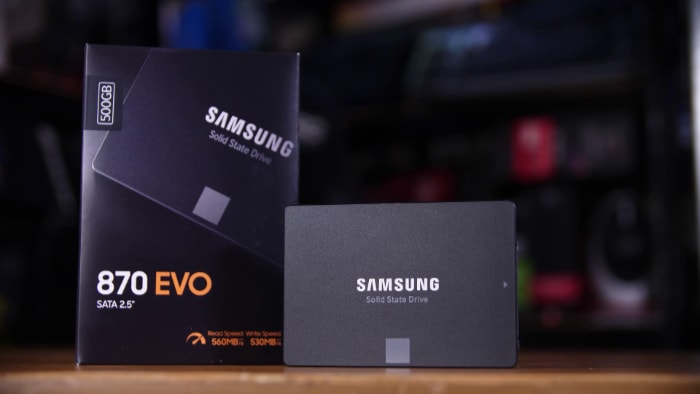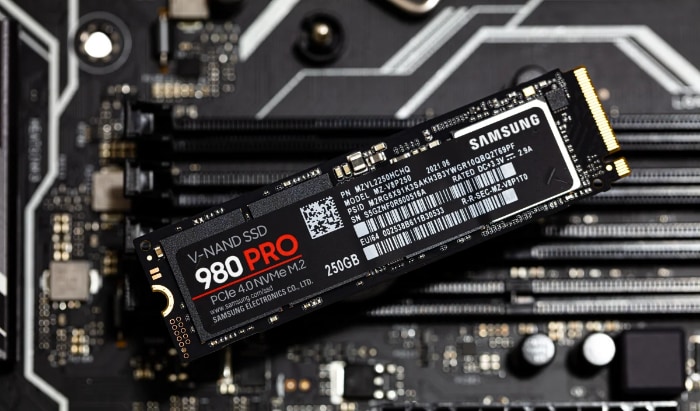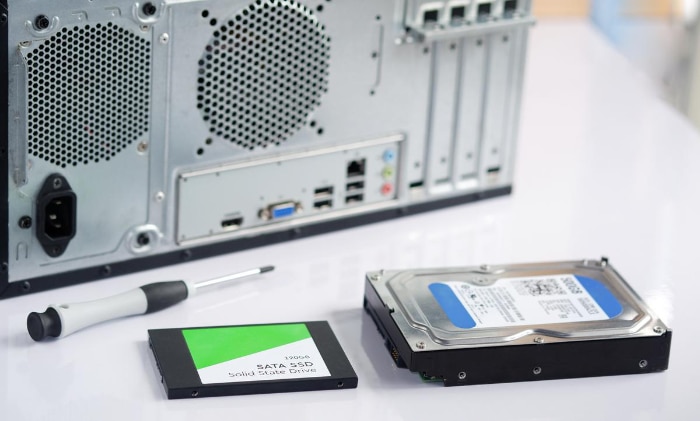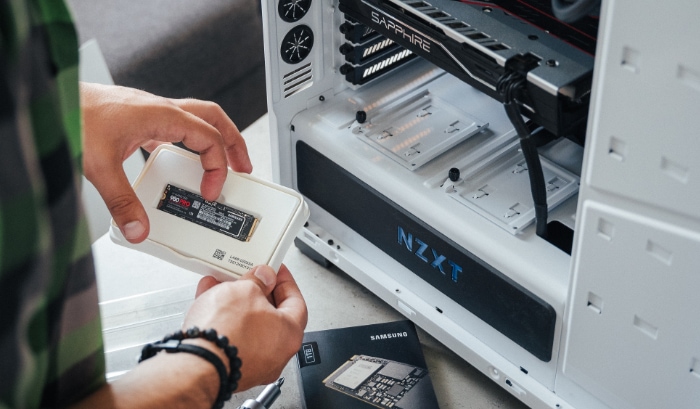Why Are SSDs So Expensive? What You Need to Know

For anyone seeking faster boot times, smoother multitasking, and better system performance, solid-state drives (SSDs) have become the gold standard in data storage. Unlike traditional hard drives, SSDs rely on sophisticated flash memory technology to deliver exceptional speed and reliability.
Yet, despite their growing popularity, SSDs remain significantly more expensive than their hard disk counterparts, leaving many asking why.
Technological Factors Driving SSD Costs
Solid-state drives are known for their exceptional performance and reliability, but these advantages come at a price. The underlying technology behind SSDs requires advanced components and processes that make their production far more intricate than traditional mechanical hard drives.
Each part of an SSD, from the memory that stores data to the controllers that regulate its performance, contributes to the overall cost.
Advanced NAND Flash Memory
At the core of every SSD is NAND flash memory, a type of non-volatile storage that retains data even without power. Unlike the magnetic platters found in hard drives, NAND flash uses semiconductor-based technology to store information, enabling faster access speeds and more compact designs.
However, this innovation comes with significant manufacturing complexity.
NAND flash memory is produced in different types that vary in speed, capacity, and durability, including Single-Level Cell (SLC), Multi-Level Cell (MLC), Triple-Level Cell (TLC), and Quad-Level Cell (QLC). SLC, for instance, offers the highest performance and reliability by storing one bit of data per cell.
In contrast, QLC allows for higher storage density but sacrifices speed and endurance, as it stores four bits per cell. Producing these variations requires intricate engineering, precision manufacturing, and significant investments in research and development, all of which drive up production costs.
Additionally, shrinking the size of memory cells to pack more storage into smaller physical spaces has pushed the limits of technology, further increasing expenses.
High-Performance Controllers
The controller is another critical component of an SSD, serving as the brain behind its operations. It manages how data is read, written, and erased while ensuring the drive functions efficiently and reliably.
Advanced controllers significantly contribute to an SSD’s price because they are designed to handle complex tasks, such as wear leveling, error correction, and data encryption.
Developing high-performance controllers requires specialized hardware and software engineering, which can be costly for manufacturers. Controllers must also be compatible with cutting-edge technologies like PCIe and NVMe interfaces to deliver the fastest possible speeds.
Efforts to optimize controllers for new standards, maintain backward compatibility, and improve reliability over extended use add further layers of complexity. This level of sophistication ensures SSDs maintain their high-speed advantage over hard drives, but it also increases production costs.
Precision Manufacturing Requirements
The production of SSDs demands meticulous precision and stringent quality control to ensure their reliability and performance. Unlike mechanical hard drives, which use relatively straightforward assembly processes, SSDs consist of intricate semiconductor components that require advanced fabrication techniques.
Manufacturers must create billions of microscopic transistors on silicon wafers, test each memory cell for defects, and assemble the drives with extreme accuracy.
Miniaturization is another significant factor affecting manufacturing costs. As SSDs evolve, there is an ongoing push to create smaller, more efficient drives with higher storage densities.
This requires state-of-the-art equipment and expertise, driving up expenses for manufacturers. Quality testing also plays a crucial role, as SSDs must endure rigorous evaluations to meet high durability and performance standards.
Any imperfections during the production process could lead to data loss or drive failure, making quality control an essential yet costly aspect of manufacturing.
The combination of cutting-edge materials, complex engineering, and flawless execution explains much of the cost behind SSD technology. While these factors may result in higher prices for consumers, they also ensure the performance, reliability, and longevity that have made SSDs a preferred choice for modern storage solutions.
Market Dynamics Influencing Pricing

The pricing of SSDs is not determined solely by the technological complexity behind them. Market forces play an equally significant role in shaping their cost.
From disruptions in the supply chain to surging demand driven by cutting-edge industries, SSD prices are influenced by a wide range of external factors. These dynamics fluctuate over time, making SSD pricing not only higher than traditional hard drives but also more volatile.
Supply Chain Challenges
The production of SSDs depends heavily on semiconductor manufacturing, which has been under immense strain in recent years. Global chip shortages have disrupted the supply of essential components, such as NAND flash memory and microcontrollers, creating bottlenecks in the production pipeline.
Manufacturers often have to prioritize the allocation of these limited components, which pushes up prices when supply cannot keep up with demand.
Major tech companies and manufacturers, such as those producing NAND flash memory, also influence pricing by controlling production volumes. Creating excess supply risks plummeting profits, while shortages can lead to significant price hikes.
Add to this the logistical challenges, including rising costs of materials, transportation delays, and workforce shortages, and it becomes clear how supply chain disruptions directly impact SSD affordability.
Demand From Emerging Technologies
Rising demand from industries like artificial intelligence, gaming, Internet of Things (IoT), and cloud computing has put immense pressure on SSD manufacturing. These sectors rely heavily on high-performance data storage, which has made SSDs a critical component in their operations.
Gaming, for instance, benefits from SSDs due to their ability to drastically reduce load times, while AI applications require rapid data processing that only SSDs can provide.
Competing industries amplify this demand, as the same NAND flash memory used in SSDs is also integral to other devices such as smartphones, tablets, and datacenters. As more industries adopt SSDs for their performance benefits, manufacturers face mounting pressure to meet demand.
This spike in consumption, coupled with limited production capacity, contributes to higher prices for consumers.
Price Volatility in NAND Flash Market
The NAND flash memory market is notorious for its price volatility. Prices are heavily influenced by supply-demand dynamics, technological advancements, and changes in manufacturing capacity.
During periods of high demand or limited supply, prices can surge, making SSDs more expensive for consumers. Conversely, when demand wanes or production increases, prices tend to drop, though not always significantly enough to match the price gap between SSDs and HDDs.
Additionally, as newer generations of NAND flash memory enter the market, older technologies typically see price reductions. However, the transition between generations can create temporary price instability, particularly when manufacturers shift their resources toward producing the latest models.
Fluctuations are further exacerbated by external factors, such as trade policies, currency exchange rates, and global economic conditions.
Together, supply chain limitations, surging demand from advanced technologies, and unpredictable NAND flash market behavior create a complex pricing environment for SSDs. These market forces ensure that while SSDs continue to decrease in price over the long term, they may remain significantly more costly than traditional storage solutions in the near future.
Comparing SSDs to HDDs

Solid-state drives and hard disk drives compete in the storage market as two fundamentally different technologies. While HDDs offer affordability and massive storage capacities, SSDs have gained popularity for their speed, efficiency, and reliability.
Nonetheless, the question of whether SSDs justify their higher costs often comes down to a comparison of cost per gigabyte, performance advantages, and durability.
Cost Per Gigabyte
Pricing is one of the most noticeable differences between SSDs and HDDs. Hard drives remain significantly cheaper on a cost-per-gigabyte basis.
For users seeking bulk storage, HDDs are an economical solution, offering high capacities with minimal financial investment. On the other hand, SSDs, despite falling prices over the years, still cost more per gigabyte.
The technological complexity required to manufacture SSDs contributes to this price gap. Flash memory fabrication, controllers, and precision assembly all add to the production costs of SSDs.
Even as economies of scale have gradually lowered SSD prices, their advanced architecture keeps them substantially pricier than HDDs. For consumers, this means SSDs are often reserved for performance-focused tasks rather than large-scale data storage, where cost efficiency takes precedence.
Performance Advantages
The performance gap between SSDs and HDDs is wide enough to explain why many consumers are willing to pay a premium for solid-state drives. SSDs deliver much faster read and write speeds, enabling quicker boot times, faster application launches, and smoother multitasking.
Unlike the mechanical platters of HDDs, SSDs rely on flash memory, eliminating the latency associated with spinning disks and physical read/write heads.
Energy efficiency is another area where SSDs outperform HDDs. With no moving parts, SSDs consume less power, making them a practical choice for laptops and portable devices where battery life matters.
Additionally, SSDs generate less noise and heat during operation, improving the overall user experience. Although these advantages come at a higher cost, they can substantially enhance performance in scenarios like gaming, professional computing, and mobile device use.
Durability and Lifespan Considerations
Durability is often cited as a major benefit of SSDs compared to HDDs. Without physical components that are prone to wear and tear, SSDs are more resistant to shock, vibration, and accidental drops.
In contrast, HDDs rely on spinning disks and motors, which are vulnerable to mechanical failures.
However, SSDs have their own limitations. NAND flash memory relies on a finite number of write cycles, meaning that SSDs will degrade over time as they reach their maximum capacity for writes and erasures.
Modern SSDs mitigate these limitations with advanced wear leveling and error correction technologies, but the issue remains a consideration for certain heavy-use applications. On the other hand, HDDs, though susceptible to mechanical damage, do not suffer from write cycle constraints, which may make them preferable for storing large volumes of data that are infrequently updated.
Ultimately, the cost-effectiveness of SSDs versus HDDs often comes down to specific user needs. Those seeking performance, energy efficiency, and durability may favor SSDs despite their higher costs, while users looking for affordable, high-capacity storage may gravitate toward HDDs.
This balance between cost and value continues to shape the choices consumers make in selecting a suitable storage solution.
Practical Considerations for Consumers

Choosing the right SSD requires careful evaluation of personal needs, budget, and the intended use of the storage device. With a wide variety of options available, consumers often face trade-offs between performance, capacity, and cost.
Choosing the Right SSD
Selecting the appropriate SSD begins with understanding the technical factors that differentiate one drive from another. Capacity is often the first consideration, as larger SSDs provide more storage space but come with a higher price tag.
For most users, a 500GB or 1TB SSD offers a suitable balance of capacity and cost for storing operating systems, applications, and frequently accessed files. Those with greater storage needs may combine a smaller SSD with a larger HDD for cost-effective bulk storage.
The form factor also plays an important role in compatibility and performance. M.2 SSDs are compact and connect directly to the motherboard, making them an excellent choice for modern laptops and desktops.
SATA SSDs, while slightly larger and slower, are still widely used and are compatible with older systems. Additionally, the interface, PCIe or SATA, determines speed and functionality.
PCIe-based SSDs, especially those using the NVMe protocol, are much faster than those relying on the SATA interface and are ideal for high-performance tasks like gaming and video editing. However, such performance comes at a higher price. Consumers must weigh these factors against their budget to choose a drive that aligns with their specific requirements.
Strategies to Save on SSD Purchases
For those looking to reduce the cost of upgrading to an SSD, strategic planning can go a long way. Opting for a smaller-capacity SSD for critical applications, such as operating systems and frequently used software, can effectively improve system performance without the expense of a large-capacity drive.
Large files, less frequently accessed data, or backups can be stored on traditional hard drives, which provide significantly more capacity at a lower cost.
Timing purchases can also make a difference in affordability. Periods of oversupply in the NAND flash market often lead to price drops, and sales events such as Black Friday or holiday promotions can provide discounts on popular SSD models.
Keeping an eye on pricing trends and taking advantage of these opportunities can help consumers purchase high-quality SSDs without exceeding their budget.
Future-Proofing Storage Investments
Evaluating performance needs and future requirements is crucial when deciding on an SSD. For users who plan to upgrade their systems or run demanding applications, investing in an NVMe PCIe drive can offer long-term value, as these drives are better suited for tasks like gaming, 3D rendering, and high-speed file transfers.
While more expensive upfront, their higher speeds and compatibility with advanced hardware may save money in the long run by reducing the need for frequent upgrades.
For less demanding everyday use, such as casual browsing and document editing, a SATA SSD may suffice, providing a cost-effective performance improvement over HDDs. Consumers should consider how their storage needs may change over time, particularly as file sizes and software requirements grow.
Choosing a drive that offers a balance between current performance needs and the capacity to handle future workloads can ensure that the investment pays off over several years.
Conclusion
The higher cost of SSDs compared to traditional hard drives can be attributed to several factors, including their technological complexity, market dynamics, and superior performance capabilities. From the advanced NAND flash memory and sophisticated controllers to the intricate manufacturing processes, the production of SSDs requires significant investment in research, engineering, and precision, all of which drive up costs.
In addition, external market forces such as global supply chain challenges, price volatility in the NAND flash market, and surging demand from emerging industries further contribute to the premium price tag.
Despite their expense, SSDs deliver unmatched benefits. Their faster speeds, energy efficiency, and durability offer significant advantages for users seeking a high-performance storage solution.
Whether for gaming, professional tasks, or daily computing, SSDs can drastically enhance overall experience and productivity. However, the decision to invest in an SSD should factor in individual needs, budget, and intended use, as the higher cost may not always be justified for bulk storage or less performance-critical tasks.
In the end, SSDs represent a worthwhile investment for many users despite their price. By carefully weighing performance needs against cost considerations, consumers can make practical choices that align with their priorities.
In an era where speed and reliability are increasingly valued, SSDs continue to evolve as an essential storage solution, offering a glimpse into the future of data management.


